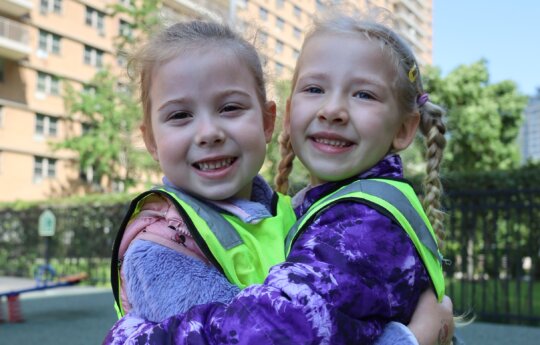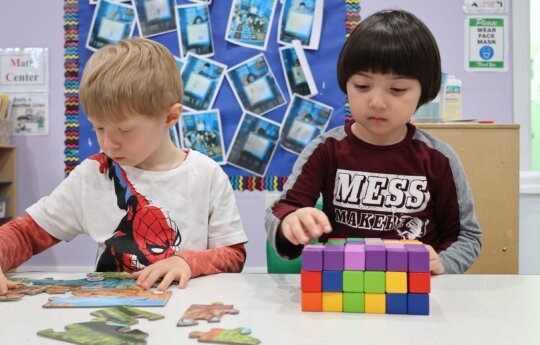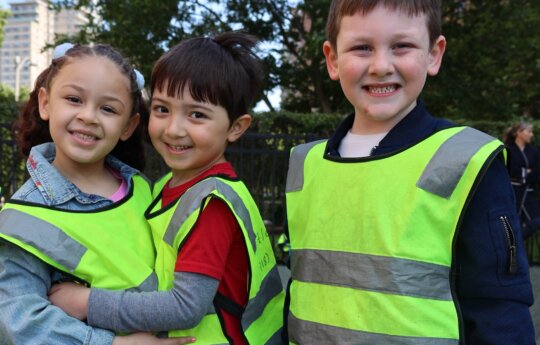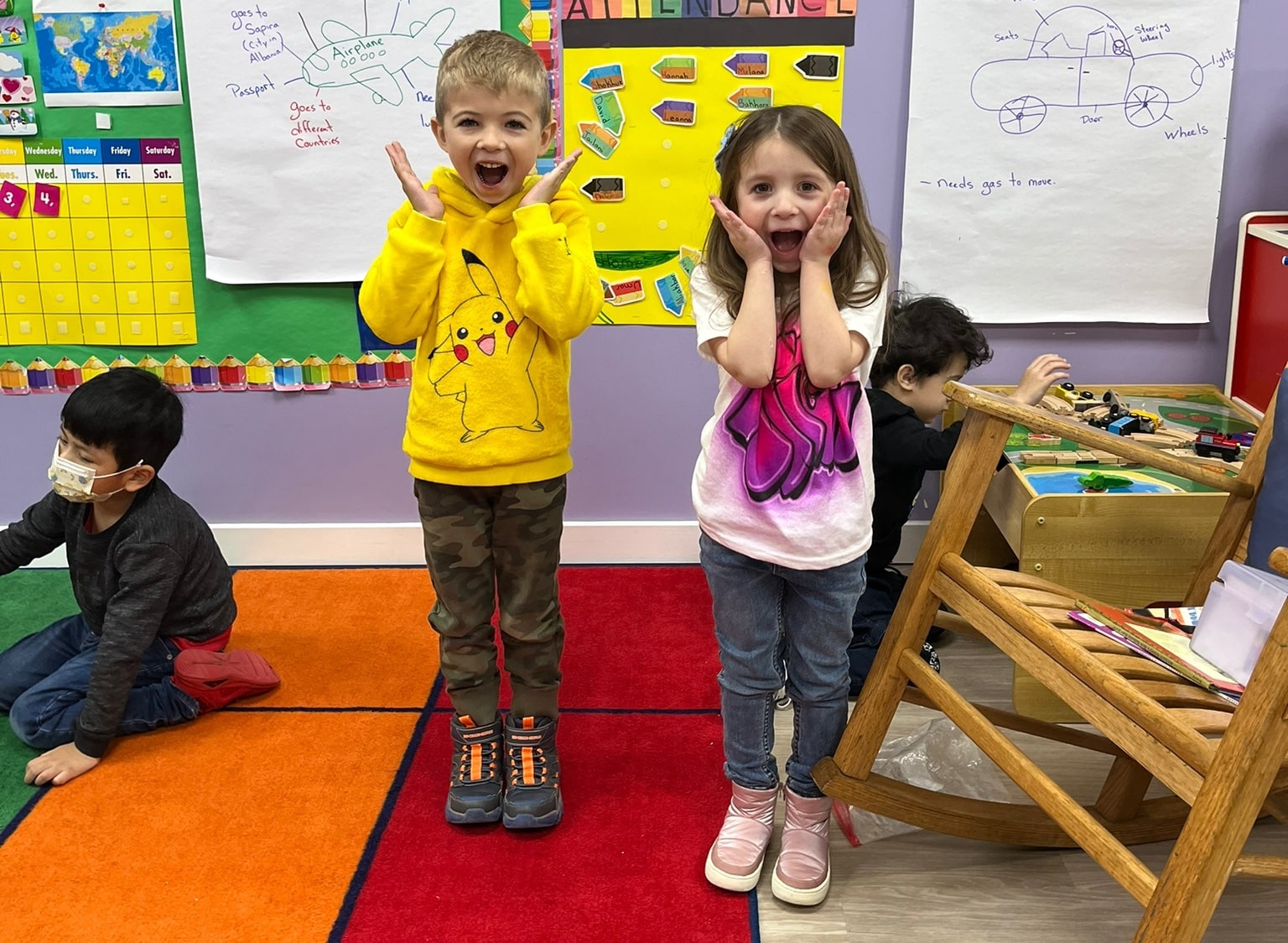
Overstimulation happens when a child is immersed in too many experiences, sensations, noise, and activity for them to cope with. In the case of toddlers, where the nervous system is very much under development, this can be in what adults might perceive as an everyday situation: a grocery store busy with people, or even just a room with too many toys in it.
How to calm an overstimulated toddler? Parents, caregivers, and educators being able to recognize overstimulation for what it is and deal with it to mitigate problematic behaviors makes an essential difference. By developing an understanding of the core values and a means of managing low-stimulus activities, we can empower those overseeing toddlers to make the right decisions that represent the best interest of the child.
What is Overstimulation in Toddlers
Overstimulation in toddlers implies the situation when a toddler is subjected to more stimuli than he or she can process effectively. Such a situation can distract a child from focusing on information, behaving properly, and controlling his or her emotions. Although the human brain and nervous system do become tempered as they mature, toddlers with their still-developing brains and limited coping means are especially vulnerable to becoming overwhelmed by too much information.
What Causes Overstimulation in Toddlers
The reasons for overstimulation incidence among toddlers may vary greatly, but, as a rule, they involve the impact of too much stimuli that exceed the resistance limit of a child’s nervous system. Some of cues for what causes overstimulation in toddlers:
- High decibels of sound, e.g., the noise of the constant operation of household appliances, from everyday items since crowded places and vividly sounding, including toys.
- Clutter of a visual sense, i.e., excessive environmental does with bold lighting, changing rapidly due to a colored picture and on the screen.
- The phenomenon of social interaction, including the range of individuals and their intensity.
- Routine, in the event of a non-maintenance, attributable to travel, special events, and more.
Typical Scenarios Leading to Overstimulation
- Family gatherings, where many people are present, a lot of talk, and action can happen;
- Shopping, due to crowds of people, noise, and visual stimuli of shopping malls and markets;
- Public events, including any types of holidays, fairs, or sports events, which are characterized by crowds of people and action;
- Physical setting, which implies a cluttered environment or an overwhelming amount of bright colors and patterns;
- Screens, including television, phone, and tablet screens, especially their fast movements and loud sounds and unsupervised viewing;
- Lack of quiet time, when a toddler does not have breaks during days.
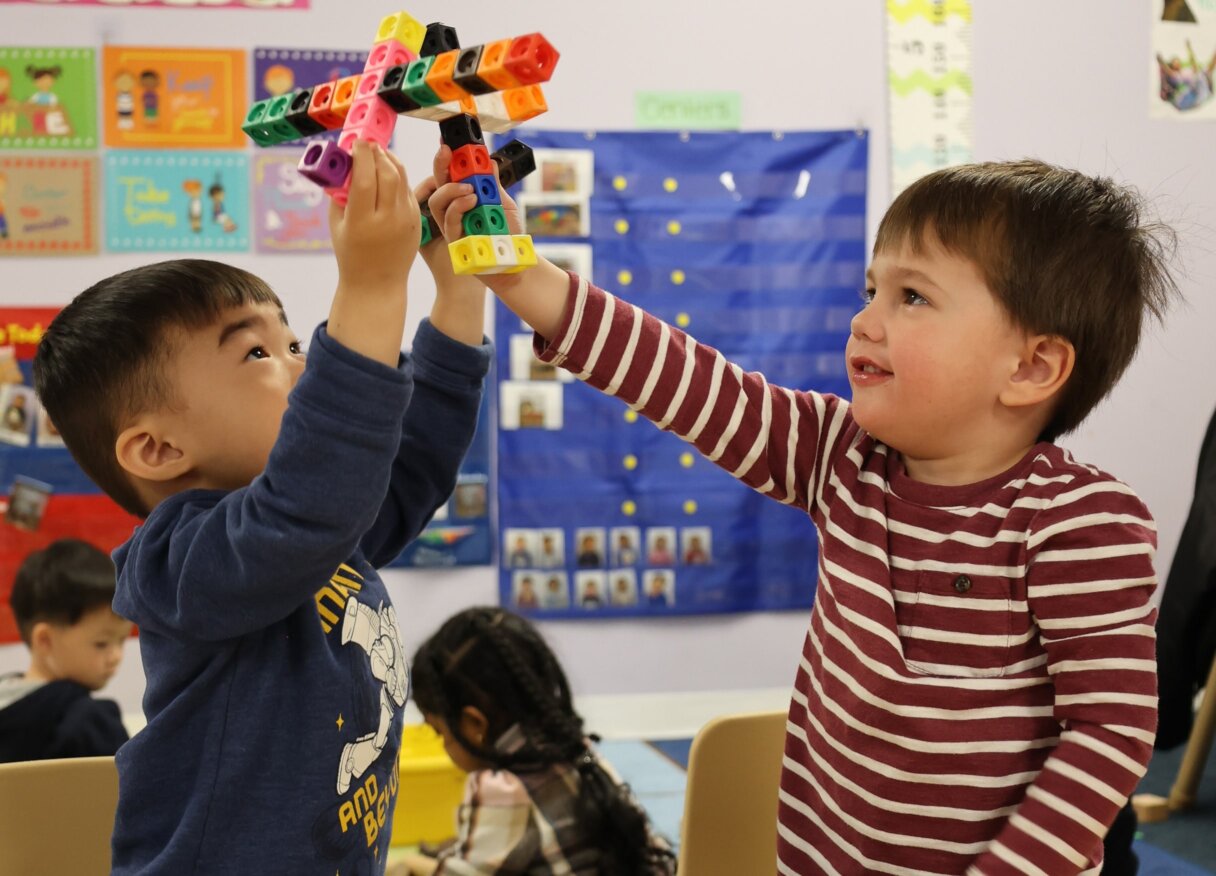
Signs of Overstimulation in Toddlers
Overstimulation of toddlers may be observed in many ways, some of them being evident, while others being less apparent. Though, these symptoms must be identified since one of the caregivers needs to interfere and help the toddler restore comfort and control. Below are the most widespread signs of overstimulation in toddlers of the lesser-known factors.
Are you trying to figure out how to gently help your toddler reset? Take a look at our music-based activities for toddlers and preschoolers that promote early learning while calming.
Common signs
- Irritability: Frequent tantrums or mood swings over minor triggers.
- Hyperactivity: Constant movement, restlessness, or fidgeting.
- Withdrawal: Unusually quiet, reserved, or hesitant to engage.
- Clinginess: Reluctance to separate from a caregiver or loved one.
- Resistance to Instruction: Difficulty following directions or joining activities.
- Physical Changes: Faster heart rate, shallow breathing, or stomach aches.
Less-known symptoms
- Sleep Disturbances: Trouble falling asleep, waking at night, or early rising.
- Changed Eating Patterns: Loss of appetite or overeating for comfort.
- Excessive Yawning: A response to stress or tiredness.
- Behavioral Regression: Returning to earlier habits like thumb-sucking or bed-wetting.
- Physical Signs: Trembling, startling easily, or heightened alertness.
- Avoiding Eye Contact: Reluctance to make eye contact due to stress.
Effects of Overstimulation in Toddlers
Your child may refuse to do anything, hide or leave the room, look uncomfortable, be picky, have problems switching between tasks, or become more quiet or shy, among other behaviors that could indicate overstimulation. Here are more cues of overstimulation in toddlers:
Short-Term Effects
- Emotional instability. In a short run, overstimulation usually wants to blow off some steam in the form of a longer tantrum, crying, or unpleasant irritability. The toddler can show an emotional response to anything he sees or feels, and it will be virtually unpredictable because he cannot control it in a situation of being overwhelmed.
- Behavioral problems. Overstimulated toddlers can react to anything nearly overt or quite the opposite, suppressing all emotions. This is the defense mechanism of the psyche because the question of an excessive flow of sensory information only underestimates contact with the world.
- Physical signs. All classic symptoms here include fatigue; irregular sleep; a more significant number of any stress levels, such as an increased heart rate or even sweating. They allow you to come into such a condition because the body is still trying to fight the overload of all perception. Taking into account many parameters simultaneously.
- Decline in some cognition capacity. Mostly one may see the decreased attention span, the inability to perceive new information, or the more straightforward processing of received information overloading as a bar problem-solving skills in general and the part of decision-making, respectively.
Long-Term Effects
- Developmental delays. If a toddler is regularly exposed to overstimulation without proper intervention, they might develop delays in various areas. A child might learn to develop strategies for dealing with stress caused by overstimulation instead of focusing on the subject they are interested in. The delays may show in language, motor, or interaction skills .
- Problems with emotional regulation. Sensory overload over a long period of time leading to overstimulation might cause children to become dependent on such strong stimuli and being unable to calm down or focus in a monotonous environment.
- Behavioral issues. Persistent overload might cause the problem to become chronic and normal for the child, leading to persistent aggression, anxiety, or avoidance behaviors that will negatively impact child’s interest and performance in a school or home environment.
- Social ineptitude. Overwhelming stimuli takes up too much of the child’s focus, leaving no room for social skills acquisition, which requires dedicated, alert attention and consideration of the partner’s responses or expected responses. This may lead to lack of social skills in the child, trained on sticking with their side of the interaction due to being constantly in an uncomfortable overstimulated state.
- Health issues. Chronic stress from consistent overstimulation might lead to future issues with anxiety and depressions, as well as various chronic conditions, such as headaches and problems with the immune system.
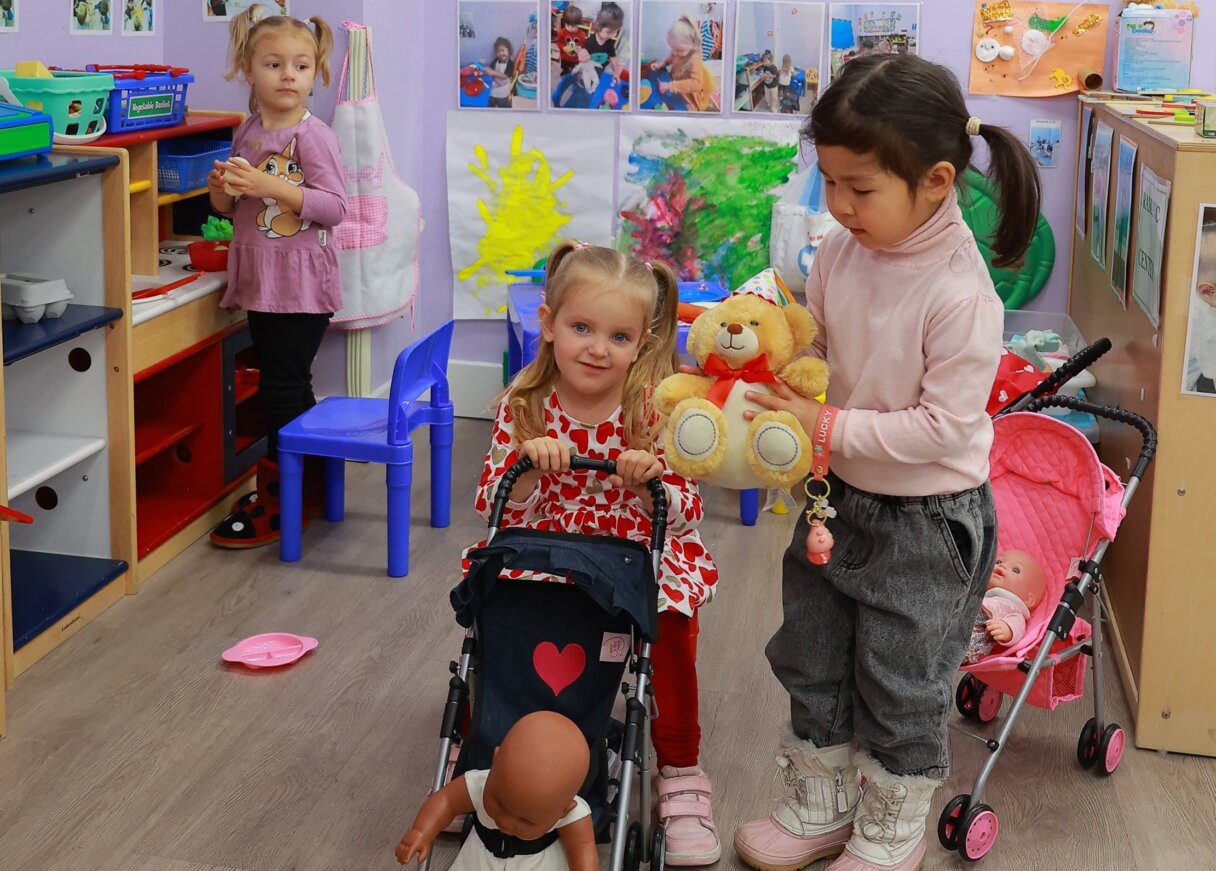
How to calm an overstimulated toddler
There are many ways to help kids calm down. But my “go to” calming environment is something called heavy work. It’s especially useful for kids who are overstimulated.
Heavy work is when kids push or pull on an object. Or they compress or stretch a body joint. Think body resistance. Slow resistance requires kids to exert effort against their muscles.
1. Create a calm environment
- Minimize Clutter. Arrange children’s playing area in such a way that it is tidy and free of clutter. It often happens that the child considers dozens of toys around itself, and it becomes much harder to concentrate attention;
- Control noise. Avoid any excessive noise by playing soft music or using white noise machines to mask out the background noises. Also be careful when it comes to sound volume on TV and other media sources;
2. Routines & transitions
- Predictable Schedules. Daily routines such as mealtimes, nap schedules, playtimes are all crucial for order and security. Such actions eliminate fear and tension out of the unpredictability of their day.
- Gradual Transitions. Do your best to give your child heads up on any major changes in their daily routine. Being prepared will help them relax and reduce stress.
3. Limit screens & high-stimulus inputs
- Set Clear Limits. Create rules for the time during which the preschooler can stay in front of the screen, and adhere to them. This will help avoid the overstimulation that comes with the excessive exposure to fast-paced, loud, visually noisy content.
- Choose Content Wisely. Preschoolers should mostly watch slow-paced content, such as educational shows, which allows them to learn while not overloading the senses.
4. Quiet time & sensory breaks
- Incorporate Quiet Play: Encourage activities like reading, puzzles, or drawing that allow for calm engagement and creativity without sensory overload.
- Regular Breaks: Schedule breaks between high-energy activities to give toddlers a chance to rest and reset their emotional and sensory inputs.
5. Be responsive to individual needs
- Watch for Signs of Overload. Common signs for overstimulation can be which are easy to define; discovery of similar symptoms is easier with having continuous contact with a toddler.
- Provide Comfort and Reassurance. It is recommended to calm a toddler as well as possible in this situation by patting it, covering, talking to it, and trying to square up its fears with words.
6. Align with all caregivers
- Consistency Across Caregivers. It is important that each caregiver knows how to distrain a toddler and that they are using the methods that are known to the main caregiver.
- Communication. A caregiver must capitalise on his efforts by regularly discussing with other care givers their efforts and the reactions of their toddler and taking conclusions from it.
How to prevent overstimulation day-to-day
When they are feeling overstimulated, some kids find solace in a peaceful environment. Locate a peaceful area in your home where your child can go if they need time to unwind and recuperate from a sensory overload.
If you have sensory overload while out and about, it’s helpful to know where you can go, like your car, when you’re heading out for the day. These daily overstimulation prevention tips can help parents and kids have more seamless routines.
At Home
- Set aside a peaceful, low-stimulation space for rest and recuperation.
- Reduce your exposure to environments with a lot of visual activity and loud noises.
- Continue your daily schedule in a consistent manner.
- Make sure you eat regularly and get enough sleep.
During Outings
- Choose peaceful, secure areas (such as a car or a quiet corner) for breaks.
- Steer clear of noisy, crowded places whenever you can.
- Bring comfort items that you are familiar with, like a blanket or toy.
- Get the child ready for transitions or changes in the schedule.
At Daycare
- Organize your daily activities in a predictable manner.
- Minimize your exposure to toys, screens, and lighting that are too stimulating.
- Include a designated quiet time routine for relaxation or unwinding.
- As necessary, modify the intensity of the activity while keeping an eye on sensory input.
Conclusion
Overall, understanding and managing overstimulation in toddlers is vital to creating a supportive and fitting environment that would contribute to normal development. Limiting too much noise or too many moving objects, providing comfort and time in the Toddler Program to regroup would also have a great positive effect in any overstimulation situation.
In case you need any other assistance or support in creating the perfect learning environment for your toddler, feel free to visit Little Scholars Daycare. For further information on how you can enroll your child, visit our website or contact Little Scholars Daycare.
The Little Scholars Effect
In case you need any other assistance or support in creating the perfect learning environment for your toddler, feel free to visit Little Scholars Daycare. We have a team of experts who are dedicated to offering your children a balanced and nurturing environment, which would appreciate the developmental needs of any individual. For further information on how you can enroll your child, visit our website or contact Little Scholars Daycare.
FAQ
What is toddler overstimulation?
Overstimulation in toddlers may exhibit tantrums, irritability, withdrawal, crying, and difficulty focusing, which can frequently result in a “meltdown vs tantrum” that is either physical or emotional. Because they lack the coping mechanisms and self-control to control their reactions to such overwhelming stimuli, children are especially vulnerable.
What are the signs and symptoms?
Although they vary depending on who is observing them, signs and symptoms are indicators of an underlying injury, illness, or disease: While symptoms are subjective experiences felt only by the person experiencing them, such as pain, headache, or exhaustion, signs are objective, quantifiable things that others can see or detect, such as a fever or rash.
What causes sensory overload in toddlers?
Toddlers who experience sensory overload do so because their brains are overloaded and unable to process an excessive amount of sensory data from their surroundings. Intense or numerous stimuli from sights, sounds, smells, tastes, and textures, as well as stressful situations like a change in routine, may be the cause of this.
How to calm an overstimulated toddler?
A toddler who is overstimulated can be calmed by taking them to a quiet, dark area after being taken out of the stimulating environment. Provide comfort by cuddling, applying deep pressure, or moving gently. Along with offering a nutritious snack, you can also try relaxing activities like reading, playing with sensory toys, or listening to soothing music.
How to prevent overstimulation day-to-day?
Establish daily routines, give sleep and nutrition top priority, and use devices like noise-canceling headphones to create a peaceful, orderly home environment in order to avoid overstimulation. Set screen time limits and manage internal stress by practicing mindfulness, deep breathing, and scheduled breaks.


